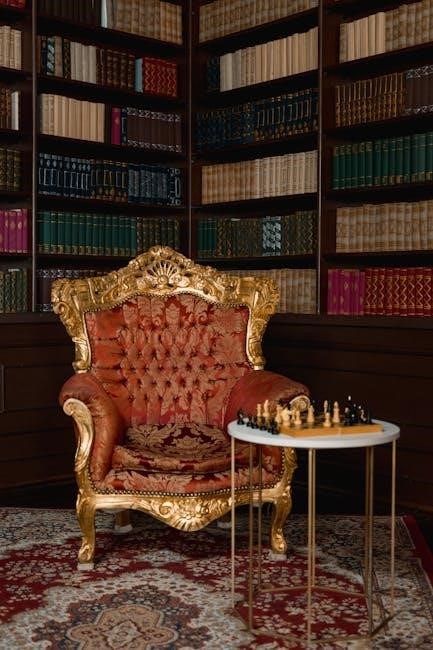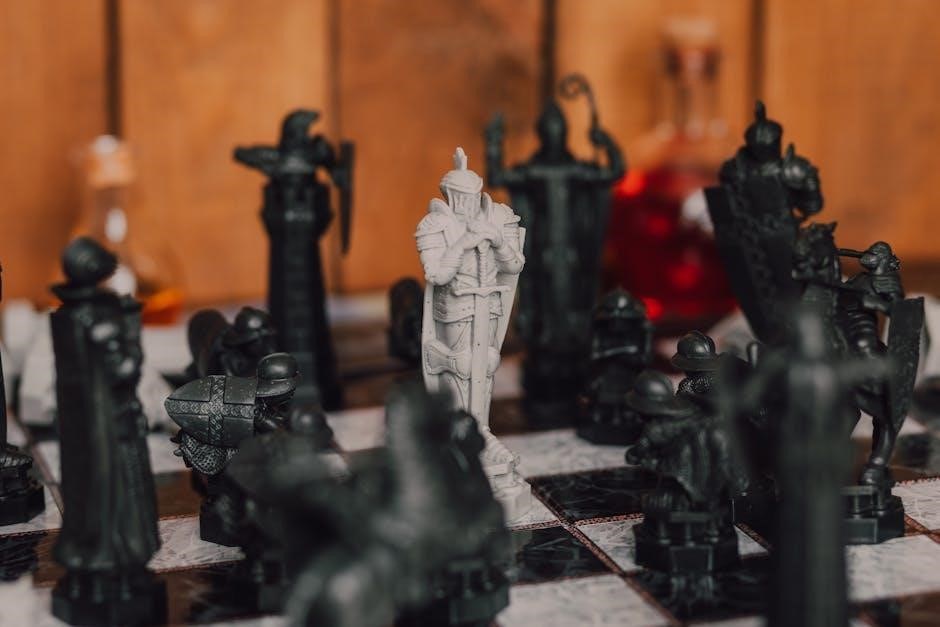Published in 1597, Daemonologie by King James I explores witchcraft, the supernatural, and demonic forces, reflecting the era’s deep fears and the king’s personal convictions.
1.1 Overview of Daemonologie
Daemonologie, written by King James I in 1597, is a treatise on witchcraft and the supernatural, presented in the form of a dialogue. It examines the nature of witchcraft, necromancy, and demonic forces, offering a detailed exploration of the occult. The text defends witch-hunts and outlines punitive measures against practitioners of dark magic. Reflecting the era’s deep-seated fears, it provides insights into James’s personal beliefs and motivations. Available in formats like PDF, EPUB, and Kindle, Daemonologie remains a significant historical document, offering a glimpse into early modern Europe’s fascination with demonology and its legal implications.
1.2 Historical Context of the Treatise
Daemonologie emerged during a period of heightened witchcraft paranoia in late 16th-century Europe. King James I’s personal experiences, particularly the North Berwick witch trials, heavily influenced the treatise. These trials, occurring between 1590 and 1592, involved alleged plots to harm James, reinforcing his belief in the supernatural. The treatise was written against a backdrop of religious turmoil and the consolidation of power, with James using it to legitimize witch-hunts and strengthen his authority. This historical context underscores the intersection of politics, religion, and superstition in shaping Daemonologie’s content and its lasting impact on witchcraft persecutions.

Key Themes in Daemonologie

Daemonologie delves into witchcraft, the supernatural, and demonic forces, emphasizing the reality of these phenomena and their threat to society and religion, while advocating strict legal responses.
2.1 Witchcraft and the Supernatural
In Daemonologie, King James I validates the reality of witchcraft and the supernatural, drawing from biblical and historical sources. He describes witches as agents of Satan, engaging in dark magic and demonic pacts. The treatise emphasizes the dangers of witchcraft, portraying it as a threat to religion, society, and moral order. James advocates for the prosecution of witches, framing their actions as heresy and a rebellion against God. His beliefs were deeply influenced by the North Berwick witch trials, where he personally witnessed alleged supernatural events. This section underscores his conviction that combating witchcraft was essential to maintaining divine and earthly authority.

2.2 Necromancy and Demonic Forces
Daemonologie delves into necromancy, defining it as communication with spirits to foresee the future or gain power. King James views necromancy as a severe form of witchcraft, emphasizing its connection to demonic forces. He argues that necromancers, by invoking spirits, enter into pacts with demons, thereby betraying God. James warns that such practices corrupt the soul and undermine societal order. He distinguishes between white and black magic, condemning the latter as inherently evil. The treatise reflects James’s belief that demonic forces are active in the world, seeking to corrupt humanity. This section highlights his theological stance on the supernatural and its dangers.
2.3 The Role of the Church in Witch Hunts
Daemonologie underscores the Church’s pivotal role in combating witchcraft, framing it as a divine duty to protect believers from Satan’s influence. King James advocates for the Church to lead witch hunts, asserting its authority in identifying and prosecuting witches. He believes spiritual leaders must guide secular authorities in understanding and combating the supernatural, ensuring that witchcraft is not merely a legal but also a moral issue. James emphasizes the necessity of religious rites and prayers in trials, arguing that only through divine guidance can justice prevail. This highlights his vision of the Church as both a spiritual and legal guardian against evil forces.

King James I and Witch Trials
King James I actively participated in witch trials, notably the North Berwick trials, driven by his personal beliefs in the supernatural and demonic forces, as outlined in Daemonologie.
3.1 The North Berwick Witch Trials
The North Berwick witch trials (1590–1592) were a series of trials in Scotland, heavily influenced by King James I’s beliefs in witchcraft. Over 70 individuals were accused of practicing witchcraft, with many confessing under torture. The trials were marked by hysteria and fear, fueled by James’s personal conviction that witches posed a direct threat to his life and rule. The trials showcased James’s deep involvement in witch-hunting, aligning with his views expressed in Daemonologie. This period solidified his reputation as a staunch opponent of witchcraft, leaving a lasting impact on Scotland’s legal and cultural landscape.
3.2 James’s Personal Beliefs and Motivations
King James I’s personal beliefs were deeply rooted in his religious convictions and fear of the supernatural. He viewed witchcraft as a direct threat to his authority and divine right to rule, believing witches conspired against him. His motivations for writing Daemonologie stemmed from a desire to justify witch-hunts and establish a theological framework for their persecution. James’s experiences during the North Berwick trials further solidified his resolve, as he believed witches had attempted to assassinate him. His dual role as a monarch and a religious leader gave his treatise significant influence, shaping public opinion and legal policies against witchcraft in both Scotland and England.

Contradictions in Daemonologie
Daemonologie reveals contradictions between King James’s religious beliefs and practical legal applications, as his theological arguments often clashed with the harsh realities of witchcraft prosecutions.
4.1 Religious Convictions vs. Practical Applications
King James’s Daemonologie highlights a stark contrast between his devout religious beliefs and the practical execution of witchcraft laws. While he fervently believed in the supernatural and the existence of witches, his treatise often overlooked the ethical implications of accusing individuals without substantial evidence. This dichotomy led to a legal framework that prioritized fear and superstition over justice, resulting in the persecution of many innocent people. The contradiction between James’s spiritual convictions and the harsh realities of witch trials underscores the challenges of applying religious ideology to secular law during this period.
4.2 The Impact of Daemonologie on Legal Frameworks
Daemonologie significantly influenced the legal systems of Scotland and England by formalizing witchcraft as a criminal offense. King James’s treatise provided a theological justification for stricter laws, leading to the prosecution of thousands accused of witchcraft. The text emphasized the necessity of harsh punishments, including execution, for those convicted of magical practices. This legal framework, rooted in fear and superstition, perpetuated a culture of paranoia and contributed to the widespread witch hunts of the 17th century. The treatise’s authority, coming from a monarch, lent credibility to these draconian measures, shaping a dark chapter in legal history.
Modern Interpretations and Availability
Daemonologie is widely available in PDF, EPUB, and Kindle formats, accessible through platforms like Project Gutenberg and Litres. Scholars analyze its historical significance, examining the contradictions between James’s religious beliefs and the treatise’s legal implications, which shaped witchcraft prosecutions in early modern Europe.
5.1 Daemonologie in PDF and Other Formats
King James’s Daemonologie is readily accessible in various digital formats, including PDF, EPUB, and Kindle. Platforms like Project Gutenberg and Litres offer free downloads, enabling easy access for modern readers. The PDF versions are optimized for different devices, with options like A4 and A6 for better readability on smartphones and tablets. Additionally, the text is available in formats like MOBI for Kindle and Android devices. This widespread availability has made the treatise a popular resource for scholars and enthusiasts exploring early modern witchcraft and demonology. Its digital presence ensures that James’s seminal work remains relevant in contemporary discussions of historical occult beliefs.
5.2 Scholarly Analysis of the Text
Scholarly analysis of Daemonologie reveals its significance in understanding early modern European witchcraft. Academics highlight its role in shaping legal frameworks and religious attitudes toward witchcraft. The text reflects King James’s personal beliefs and his influence on witch trials, particularly the North Berwick trials. Scholars also explore contradictions between James’s religious convictions and practical applications of his ideas. Modern studies examine the treatise as a historical document, providing insights into the social and cultural fears of the time. Digital availability has furthered scholarly engagement, making Daemonologie a key resource for understanding the intersection of religion, law, and superstition in the late 16th century.
